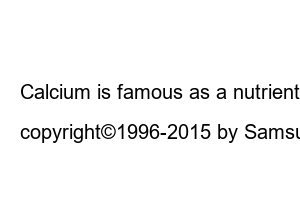마그네슘 효능Information, reservation confirmation
※ You may refuse consent to the collection and use of personal information below. In this case, you will not be able to receive the magazine.
Magnesium is present in chlorophyll in plant foods such as green vegetables. When we eat these foods, magnesium enters our bodies to form bones, regulate muscle and nerve functions, and lower blood lipids and bad cholesterol (LDL cholesterol). Therefore, if our body lacks magnesium, not only can it cause osteoporosis, but it can also cause excessive tension in nerves and muscles, causing convulsions and cardiovascular disease. According to a recent study, the daily magnesium intake of adults in our country is significantly lower than the recommended intake level (340-350 mg for men and 280 mg for women for adults). What should we do to get enough magnesium through our daily foods?
Magnesium is a component of chlorophyll, so it is abundant in plant foods, especially cocoa, nuts, soybeans, and whole grains. However, among magnesium-rich plant foods, phytic acid contained in vegetables such as whole grains and spinach is said to inhibit the absorption of magnesium. Additionally, 80-96% of the magnesium in grains is lost during the milling process, and phosphorus contained in processed foods inhibits magnesium absorption when consumed in large quantities. Therefore, it is best to consume natural foods rather than processed foods whenever possible, and consume magnesium through a variety of sources, including whole grains and vegetables.
In Korea, the recommended amount of magnesium to be consumed per day is 350 mg for adult men and 280 mg for women, and the maximum allowable amount that is harmless to the human body is 350 mg. However, recent research results have shown that the daily magnesium intake of adults in Korea is very low at 71.9 mg for men and 53.7 mg for women due to increased consumption of refined grains and processed foods and low intake of vegetables. Therefore, it is recommended to consume enough food sources such as green vegetables, beans, and nuts to meet the recommended daily amount of magnesium. If possible, it is recommended to eat 1 to 2 servings of rice made from unrefined grains, green vegetables, and side dishes made from beans at each meal, and eat a handful (30g) of nuts as a snack.
Meanwhile, the absorption of magnesium in our body is affected by other nutrients. Representative nutrients include zinc, dietary fiber, and calcium. These nutrients have a positive effect on our body when consumed in appropriate amounts. However, it is said that absorption of magnesium is mainly affected when taken in the form of supplements or when consumed in excess. Let’s take a closer look at the impact.
Zinc is said to interfere with the absorption of magnesium when consumed in excessive amounts in the form of supplements. One study found that magnesium absorption was significantly reduced in adult men taking 142 mg of zinc supplements per day.
It is good to consume enough dietary fiber, but it is known that consuming too much can interfere with the absorption and use of minerals such as magnesium. Although it is not yet clear how much dietary fiber consumed will affect the use of magnesium, it is recommended to consume within the recommended daily amount. The daily recommended amount of dietary fiber is 20 to 25 g, which can be obtained by eating mixed grain rice, 2 to 3 plates of vegetable side dishes, and fruit as a snack.
Calcium is famous as a nutrient that Koreans always consume insufficiently, but excessive intake of more than 2,000 mg of calcium per day is said to increase magnesium excretion. Calcium must be balanced with magnesium, so it is ideal to consume calcium and magnesium in a 2:1 ratio.
Change the category name or order using the arrows and click the OK button to save.
copyright©1996-2015 by Samsung Medical Center. All rights reserved.

